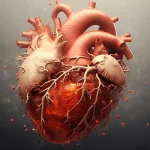Summary of Unraveling the Metabolic Mysteries of MAIT Cells:
Researchers at the La Jolla Institute for Immunology have discovered two distinct types of mucosal-associated invariant T (MAIT) cells in mouse lungs: one in combating viral infections and the other in fighting bacterial infections. This research may lead to development of new vaccines and cell therapies to strengthen the immune system against specific pathogens. The research also found that the metabolism of MAIT cells can be adjusted to combat different pathogens, suggesting innovative therapeutic strategies. The study revealed that one subtype of MAIT cells, called MAIT1 cells, produced a type 1 immune response against intracellular microbes like viruses. In contrast, another subtype, MAIT17 cells, produced a type 17 immune response against extracellular microbes like bacteria. The two subtypes also had different metabolic programs, with MAIT1 cells relying on sugar for energy and MAIT17 cells relying on fatty acids. The findings suggest that the balance between these two subtypes could be shifted to enhance the immune response against specific pathogens.
1. Unraveling the metabolic mysteries of mucosal-associated invariant T (MAIT) cells.
2. MAIT cells are unconventional white blood cells located in tissues.
3. MAIT cells are crucial in immune protection against various diseases.
4. MAIT cells exhibit distinct metabolic programming to combat different pathogens.
5. The findings of this research may guide the development of new therapeutic strategies and vaccines.
—
Unraveling the Metabolic Mysteries of MAIT Cells: A Breakthrough in Immune Protection
In the world of immunology, few things are as intriguing as unraveling metabolic mysteries. Recently, scientists at the La Jolla Institute for Immunology (LJI) made a groundbreaking discovery regarding mucosal-associated invariant T (MAIT) cells, challenging our understanding of immune protection and opening new doors for therapeutic strategies.
MAIT cells are a unique type of white blood cell that has captured the attention of both immunologists and clinicians. Unlike traditional T cells circulating in the blood, MAIT cells primarily reside in tissues and offer immune protection against various diseases. Although they only comprise 2 percent of lymphocytes in the bloodstream, they are abundant in the human body, particularly in the liver and lungs.
In a recent study published in Nature Cell Biology, LJI researchers delved into the metabolism of MAIT cells in the lungs of mice. Dr. Thomas Riffelmacher, the study’s first author, explains, “Metabolism is the way your cells use fuel molecules to do their work… this had not yet been explored in MAIT cells.”
Through their research, Riffelmacher and his team discovered that MAIT cells could be classified into two distinct subtypes: an antiviral subtype fueled by sugar and an antibacterial subtype fueled by fat. These two subtypes, MAIT1 and MAIT17 cells, respectively, play a role in combating viral and bacterial infections. Knowing these metabolic differences may lead to innovative therapeutic strategies to boost the immune system against specific pathogens.
Furthermore, MAIT cells demonstrate enhanced memory-like responses after infections, resulting in a stronger and more prolonged protective response against pathogens. Riffelmacher initially sought to investigate the molecular changes driving this memory function in MAIT cells. To do this, he administered a live bacterial vaccine strain to a mouse model, causing a significant expansion of MAIT cells in the lungs. Surprisingly, within the expanded population, two groups of cells emerged, each equipped with unique properties.
MAIT1 cells, predominantly found along blood vessels in the lungs, produce an immune response characterized by interferon-gamma secretion (IFN-ɣ). These cells specialize in fighting intracellular viruses like influenza. On the other hand, MAIT17 cells, predominantly located in lung tissue, produce an immune response defined by the secretion of interleukin-17 (IL-17). These cells are specialized in combating extracellular bacteria, such as those causing pneumonia.
Remarkably, these two cell types differ not only in their immune responses but also in their metabolic programs. MAIT1 cells remain dormant until activated and rely on sugar for fuel, while MAIT17 cells are highly active and require constant consumption of fatty acids for energy production. When the researchers manipulated the metabolism of white blood cells to favor glycolysis, they observed an increase in MAIT1 cell numbers, confirming the influence of metabolism on the MAIT cell response.
While the research findings are fascinating, it’s important to note that diet alone cannot alter MAIT cell function. Metabolism operates differently at the cellular and organismal levels, making it unlikely that changing eating patterns would directly impact MAIT cell activity. However, by pharmacologically adjusting the levels of specific metabolites, researchers could shift the MAIT cell response, enhancing their ability to combat viral or bacterial infections.
In the future, the researchers propose developing vaccines to activate MAIT1 or MAIT17 cells. Alternatively, transplanting a specific subtype of MAIT cells into patients could boost their immune response against a particular pathogen. The highly conserved nature of MAIT cells and their main signaling protein makes them less likely to trigger adverse reactions, such as graft-versus-host responses.
In conclusion, unraveling the metabolic mysteries of MAIT cells has provided valuable insights into their function and potential therapeutic applications. This groundbreaking research opens up exciting possibilities for developing targeted vaccines and cell therapies to enhance the immune system’s ability to fight off specific pathogens. As we delve deeper into the intricate workings of our immune system, we continue to unravel the mysteries of the human body and pave the way for a healthier future.


